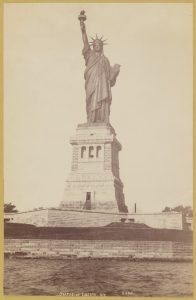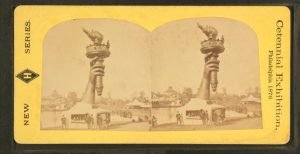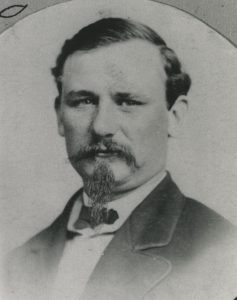
On October 28, 1886, President Grover Cleveland and a host of other dignitaries formally dedicated the Statue of Liberty in New York Harbor. The soldiers of Fort Mackinac, along with people across the country, helped make the statue a reality.

The French sculptor Frédéric Bartholdi, along with influential French abolitionists, first conceived the idea of a large statue representing freedom and Franco-American cooperation sometime around 1870. Work began on the statue itself in France in 1876, and the U.S. government agreed to accept the statue once complete, selecting Bedloe’s Island in New York Harbor as the location for the new monument. Although the statue itself would be a gift from the people of France, considerable American fundraising was necessary to build a suitable pedestal and erect the finished product. When government fundraising efforts fell short or were vetoed, publisher Joseph Pulitzer led a public campaign to finish the statue. Donations, most less than $1.00, poured in from across the country.

The garrison of Fort Mackinac also contributed. On December 18, 1883, Captain Edwin Sellars of the 10th Infantry sent the Statue of Liberty Executive Committee a check for $21.25. The officers and men of Companies C and D had raised these funds amongst themselves.
The statue arrived, in pieces, in New York in 1885. Workers completed the pedestal in 1886, and then reassembled the statue on top of it. Since then, the statue, properly called ‘Liberty Enlightening the World,’ has stood watch over the harbor, thanks to the many small contributions like those made by the soldiers of Fort Mackinac.









